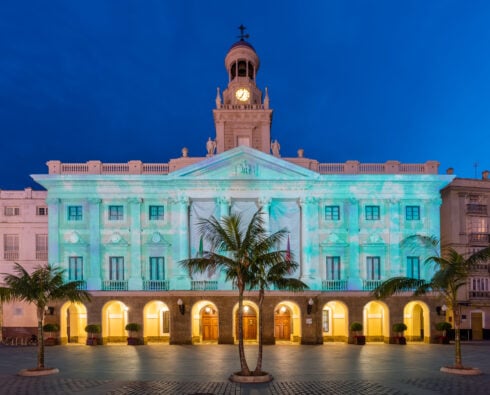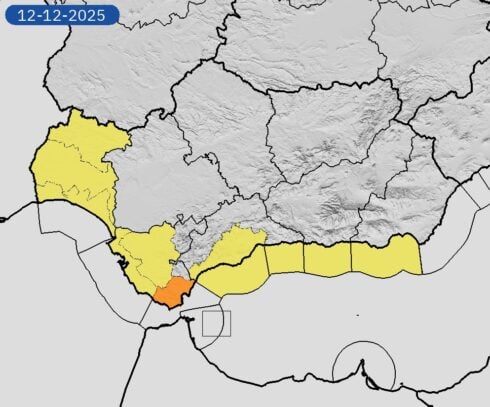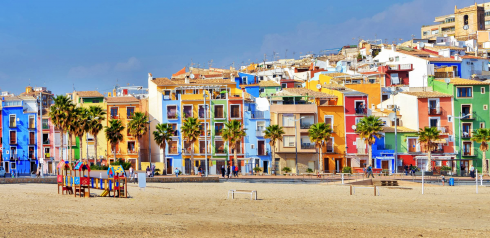A BRIT influencer has become just the latest tourist to marvel at how one of Andalucia’s most overlooked cities bears striking similarities to the capital of Cuba.
But the architectural DNA this ancient port city in Spain’s southern Atlantic coast actually flows in the opposite direction – from Havana to Cadiz.
Rob Adcock, who has more than 40,000 followers on Instagram, arrived in Cadiz knowing little about its 3,000-year history but was immediately struck by its resemblance to the Cuban capital.
“You feel like an extra on a film set,” he told his followers. “Someone described it to me as the Cuba of Europe, and they’re not wrong.”
The comparison has resonated with thousands of travellers discovering the coastal city’s narrow cobbled streets, colourful colonial facades and stunning seafront promenade – features that mirror Havana’s famous Malecon almost exactly.
So much so that Cadiz’s La Caleta beach actually doubled for Cuban scenes in the James Bond film Die Another Day.

But whilst the similarities are undeniable, the architectural influence actually travelled from Spain to the Americas, not the other way around.
Cadiz held a virtual monopoly on trade with the New World until 1778, making it the principal gateway between Spain and its colonial territories.
This dominant position transformed Cadiz into one of Spain’s wealthiest and most cosmopolitan cities.
The Casa de Contratacion – Spain’s House of Trade controlling all commerce with the Americas – relocated from Seville to Cadiz in 1717, cementing its status as the empire’s commercial heart.
Many of the grand palaces and townhouses that still line Cadiz’s historic squares were built with fortunes made from this lucrative American trade.

Wealthy gaditano (people from Cadiz province) merchants didn’t just ship goods across the Atlantic – they exported an entire architectural aesthetic.
When Spanish emigrants and traders settled in Havana and other Latin American cities during the 1800s, they brought with them the neoclassical and Baroque styles that defined their home city.
Cuban architecture became a mirror of Cadiz, complete with the same narrow streets, ornate balconies and coastal promenades that characterise the Andalucian original.
The connection between the two cities runs so deep that they officially became twin cities in 1998, acknowledging centuries of shared cultural DNA.
Today Cadiz is no longer the seat of grand commerce, but Adcock’s enthusiastic praise highlights several practical advantages that make it an ideal alternative to more crowded Spanish destinations.
READ MORE: Ryanair adds extra winter flights to Costa Blanca airport after cutting regional services in Spain

“It’s right by the sea, so it’s a bit cooler than other cities in the area,” he explained. “Plus, it’s not expensive. It’s the perfect combination of city and beach.”
The city’s compact size particularly impressed him. “You can walk everywhere – nothing is too far away. I didn’t spend a penny on taxis,” he said.
He also noted that Jerez Airport is just £4 away by train, with flights through Skyscanner available for as little as £34, even during peak summer season.
Beyond the practical benefits, Cadiz offers something increasingly rare in modern Spain – authenticity without the tourist throngs.
Considered the oldest continuously inhabited city in Western Europe, it was founded by Phoenician traders as a port to access precious metals including gold, tin and silver.

The Romans later made it a major naval base, and by the time of Augustus’s census, Cadiz was home to more than 500 equites (wealthy upper-class citizens) – a concentration rivalled only by Padua and Rome itself.
The city’s Old Town, characterised by antiquated quarters like El Populo, La Vina and Santa Maria, presents a marked contrast to newer areas.
Giant trees supposedly brought from the New World flourish in parks like the historic Parque Genoves, whilst the 18th-century Tavira Tower still commands panoramic views despite its modest 45-metre height – a testament to the city’s largely unchanged medieval skyline.
Adcock called Cadiz one of Europe’s most underrated cities, adding that his ‘photo gallery has never looked so good’ after his visit.
His comparison to Havana, whilst geographically reversed, captures an essential truth: both cities share a timeless coastal charm and architectural beauty that transcends their 7,400 kilometres of separation.
The only difference is that Cadiz wrote the original blueprint – and Cuba faithfully follows it centuries later.
Click here to read more Olive Press Travel News from The Olive Press.








